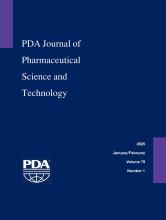Abstract
The analysis of extractables and leachables and subsequent risk assessment is an important aspect of the determination of biocompatibility for many medical devices. Leachable chemicals have the potential to pose a toxicological risk to patients, and therefore it is required that they be adequately characterized and assessed for potential safety concerns. One important consideration in the assessment of leachables is the choice of a suitable simulating solvent intended to replicate the use condition for the device and its biological environment. This aspect of study design is especially difficult for blood contacting medical devices due to the complexity of simulating the biological matrix. This publication reports a comparison of the extracting power of different binary solvent mixtures and saline in comparison with whole blood for a bloodline tubing set connected to a hemodialyzer. Ten different known extractables were quantified spanning a range of physicochemical properties and molecular weights. The results indicated that for low molecular weight analytes, a suitable exaggeration for whole blood can be obtained using a low concentration ethanol/water mixture (≈20%) and in general extracted quantity increases with the concentration of alcohol cosolvent. For polyvinylpyrrolidone, the opposite trend was observed as solubility of the polymer was found to decrease with increasing alcohol concentration, resulting in lower extracted quantities at high alcohol concentrations. Analysis of ethanol/water concentrations in the extract solutions post extraction indicated no change in solvent composition.
- Received August 23, 2023.
- Accepted March 15, 2024.
- Copyright © 2024, Parenteral Drug Association






